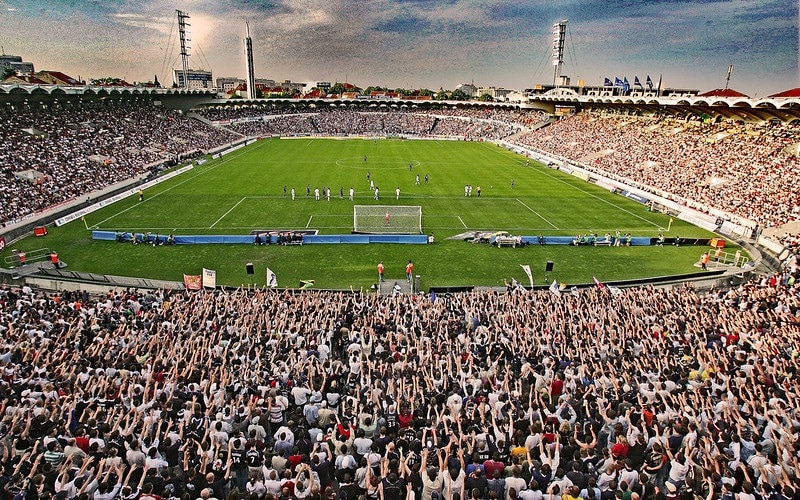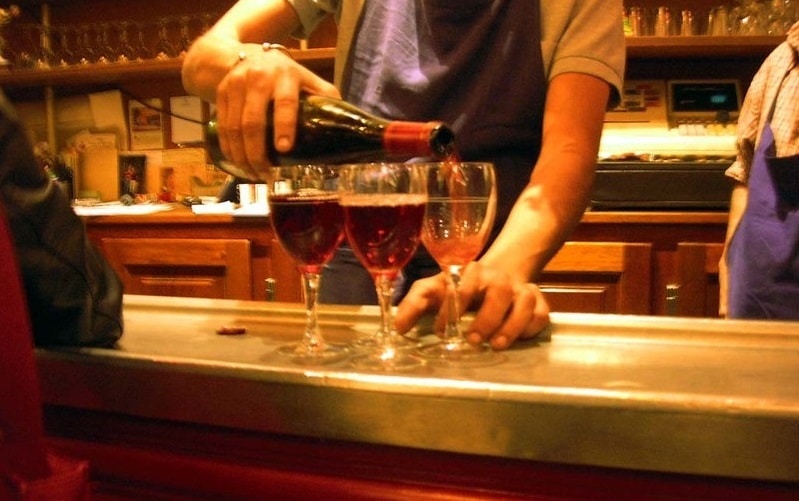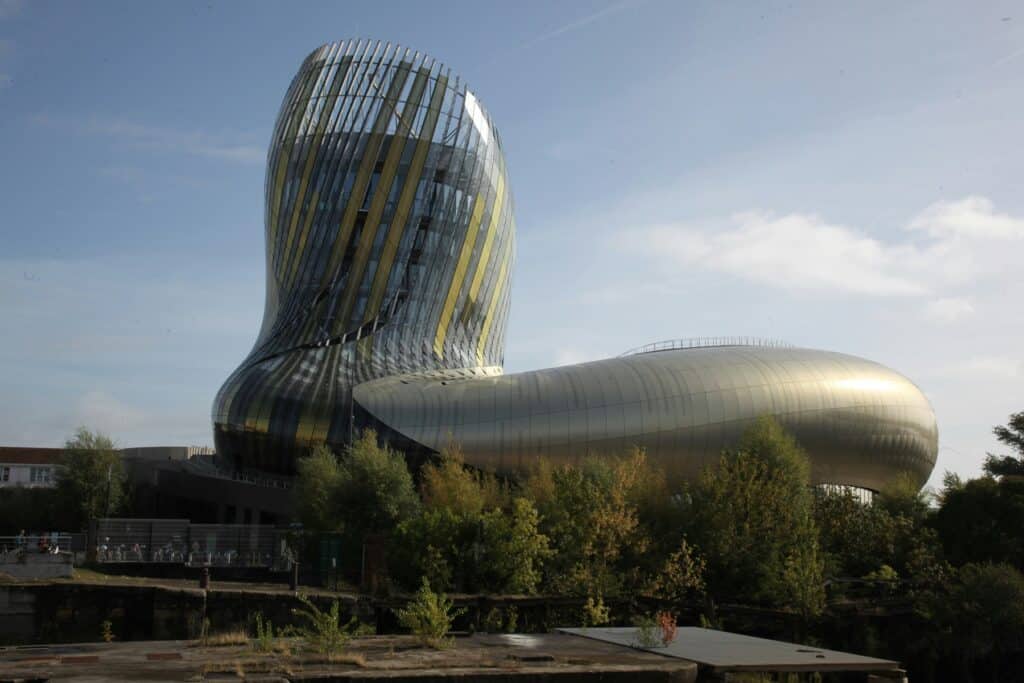An Immersive Guide to Bordeaux
Enlighten Excursions' New Small Group Slow Travel Experiences
Imagine strolling through a city where the scent of aged wine mingles with the salty breeze from the Garonne River… This is Bordeaux. Bordeaux is synonymous with exceptional wine, but there’s far more to this French gem than its world-renowned vineyards. Nestled in the Nouvelle-Aquitaine region, Bordeaux is a city that harmoniously combines its rich history with a vibrant contemporary art scene, stunning architecture, a totally cool welcoming culture, and exquisite gastronomy. We decided to write an Immersive Guide to Bordeaux to show that Bordeaux should be more than just a 1 or 2 day stop on a tour of France. This city offers something unique for every traveler and deserves a nice slow stay. So whether you’re a history buff, a wine connoisseur, a culture vulture, a foodie, or an art and architecture enthusiast, Bordeaux is waiting for you.
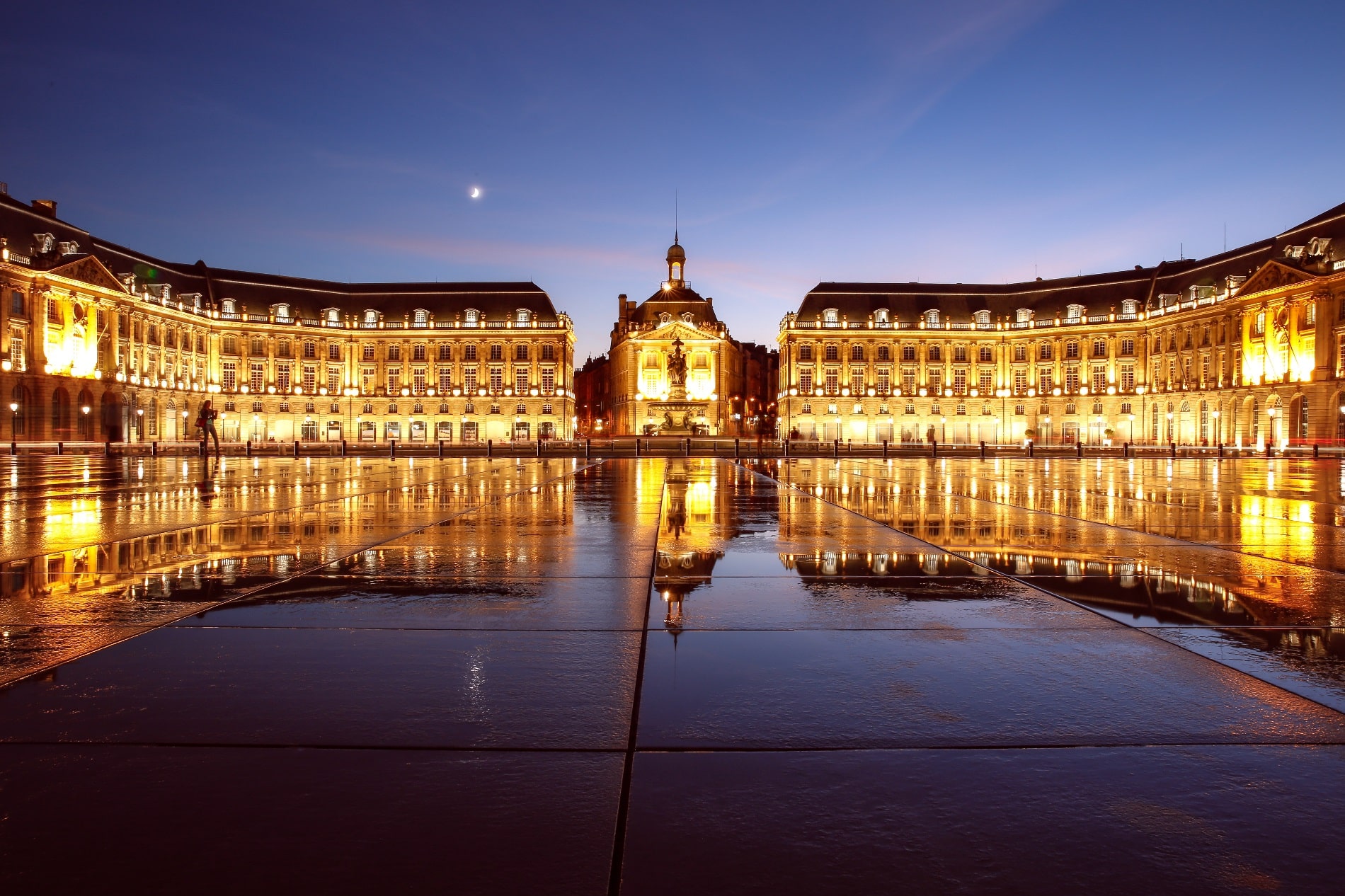
In recent years, the city of Bordeaux has undergone a remarkable transformation, making it one of the most dynamic and attractive destinations in France. As a native Washingtonian, I harbor mixed feelings about gentrification in general. But as a travel advisor it’s hard to deny that, with an increasing number of boutique hotels, trendy restaurants, and cultural festivals, Bordeaux has never been more welcoming to travelers. Its pedestrian-friendly zones and the vast Place des Quinconces—the largest public square in France—make exploring the city a delightful experience.
Adding to its allure, Bordeaux was designated a UNESCO World Heritage Site, recognizing its superior mélange of modern structures with its outstanding collection of 18th-century architecture. The city’s modern infrastructure—including the innovative Chaban-Delmas bridge—blends seamlessly with its historic landmarks, creating a unique atmosphere. Bordeaux is easily accessible via Bordeaux-Mérignac Airport (BOD), the region’s major international airport, offering direct flights to numerous European cities anstd select long-haul destinations, making it a convenient gateway for travelers from around the world. And now, thanks to the high-speed TGV train, travelers can now reach Bordeaux from Paris in just two hours, making it an accessible destination for both quick getaways and immersive stays. One could even say the TGV ushered in Bordeaux’s gentrification.
Bordeaux’s Local Culture
What I have come to look forward to the most when I travel is authentic encounters with locals. The appeal of Bordeaux for me is its reputation for having a cool and laid-back local culture. The people are said to be incredibly friendly with an easygoing, balanced way of life that’s contagious. Apparently, the whole city seems to be a living example of joie de vivre. Here people savor every moment of life. From enjoying long lunches to playing a game of Pétanque at the park after work or school, there’s a real appreciation for quality time. Ahhh…. quality time. Lord knows I need to get me some of that! I can’t wait to pit my meagre Pétanque skills against those of local experts in one of the local Bordeaux parks!
English is increasingly spoken in Bordeaux. And, bucking the stereotype that French people are rude, the Bordelais are typically welcoming, kind, and patient, especially with us wannabe French speakers.
But proceed with caution my aspiring French speakers, as you’ll need to learn a few local expressions. In Bordeaux, in informal settings they say gavé bien instead of très bien (“very good”). This is slang. In a supermarket, clerks will ask you if you need une poche, or une poche plastique (a plastic bag), but never un sac, as is more common in France. In addition to avoir peur (to being afraid), folks in Bordeaux sometimes avoir les monges. Most importantly for my husband and all those who love pain au chocolat, here it’s called une chocolatine. You will never enjoy this Francophile favorite in Bordeaux if you don’t abide by this name.
The daily lives of the Bordelais are filled with, not just work and school, but rugby games, soccer matches, and numerous events, each packed with energy, excitement, and a strong sense of ownership and local pride.
All Bordelais will talk passionately about their local food, history and traditions. And of course, Bordeaux’s wine culture is impossible to escape. It’s something that’s woven into everyday life and celebrated at every opportunity, contributing to the city’s unique atmosphere.
Good to Know Before You Go
Knowing a few things before embarking on your exploration of this city will save you from sadness and cursing. First, shops and some restaurants and museums are closed on Sundays. Many shops and museums are also closed either the entire day on Mondays or at least Monday mornings. Additionally, it can be hard to find a place to eat out between 2:00 pm and 6:00 pm since many restaurants close for an extended lunch break. So, never assume anything when it comes to opening hours. Always call or ask someone.
Bordeaux for History and Art Lovers
Beyond its friendly locals and unique expressions, Bordeaux offers a wealth of cultural treasures for history and art enthusiasts. Bordeaux, a city with a rich and storied past, traces its origins back to ancient times when it was a Gallic settlement before becoming the Roman city of Burdigala in the 1st century BCE. Flourishing as a commercial hub, it later gained prominence under the rule of the Dukes of Aquitaine. In the 12th century, Bordeaux’s fortunes soared when Eleanor of Aquitaine’s marriage to King Henry II of England integrated the city into the English crown, establishing a lucrative wine trade with England that shaped its economy for centuries. Following the end of English rule in the 15th century, Bordeaux continued to thrive, particularly during the 18th century, when it became one of France’s most elegant and prosperous cities, thanks to its role in colonial trade and maritime commerce. Today, Bordeaux is celebrated as a UNESCO World Heritage Site, renowned for its architectural beauty, historic landmarks, and its enduring legacy as one of the world’s premier wine capitals.
For those passionate about history and art, you will uncover many cultural treasures in Bordeaux. Bordeaux, often called the “Port of the Moon” due to the crescent shape of the Garonne River, is a city that seamlessly blends rich history with a vibrant art scene.
Historical Landmarks and Heritage Sites
Near the Riverfront
Place de la Bourse and the Miroir d’Eau
One of Bordeaux’s most iconic sites, Place de la Bourse, is a masterpiece of classical architecture. Its symmetrical design reflects beautifully on the Miroir d’Eau, the world’s largest reflecting pool. This is a perfect place to appreciate the grandeur of 18th-century urban planning.
Porte Cailhau
This stunning medieval gate, built in the late 15th century, once served as the main entrance to the city. Its gothic architecture and decorative elements make it a fascinating glimpse into Bordeaux’s past.
In the City Center
Grosse Cloche
One of the oldest belfries in France, the Grosse Cloche (Big Bell) is a well-preserved remnant of Bordeaux’s medieval past. Once a prison gate, it now stands as a symbol of the city’s rich heritage.
Palais Rohan
Currently serving as Bordeaux’s City Hall, this grand palace was originally built as an archbishop’s residence in the 18th century. Its neoclassical architecture and opulent interiors are worth discovering.
In the Quartier Saint-Michel
Basilique Saint-Michel
This Gothic church, with its towering 114-meter spire, is a must-visit for history lovers. The surrounding area, known as Quartier Saint-Michel, is full of antique shops and a lively atmosphere perfect for exploration.
Musée d’Aquitaine
For a deep dive into Bordeaux’s history, the Musée d’Aquitaine is essential. It chronicles the region’s past from prehistoric times through the Gallo-Roman period and Bordeaux’s prominence in the wine and maritime trades. Highlights include an impressive collection of Roman artifacts, a stunning 3rd-century mosaic, and exhibits on the transatlantic slave trade, offering a comprehensive look at Bordeaux’s complex history.
Musée des Beaux-Arts
Bordeaux’s Fine Arts Museum is home to an impressive collection of European paintings from the Renaissance to the 20th century. Works by artists like Rubens, Delacroix, and Matisse make this museum a must-visit for art lovers. Key highlights include Eugène Delacroix’s Greece on the Ruins of Missolonghi, Francisco de Goya’s Portrait of the Countess of Casa Flores, and a remarkable selection of Impressionist and Baroque masterpieces.
CAPC – Musée d’Art Contemporain
Housed in a former warehouse, this museum showcases contemporary art from France and beyond. Its industrial setting contrasts beautifully with avant-garde exhibitions and installations. Notable highlights include works by renowned artists such as Daniel Buren and Sol LeWitt, along with large-scale, immersive installations that redefine modern artistic expression.
Institut Culturel Bernard Magrez
This private art foundation, set in a stunning château, hosts rotating contemporary art exhibitions. It’s an excellent place to discover emerging artists and new perspectives. The foundation also features a remarkable collection of street art and installations, blending classical elegance with bold, modern creativity.
La Cité du Vin
While primarily dedicated to wine culture, La Cité du Vin includes artistic and historical exhibits on the role of wine in civilization. But the building itself is an architectural marvel. Highlights include a sensory wine-tasting experience, interactive exhibits on the history of winemaking, and a panoramic wine bar offering breathtaking views of Bordeaux.
Walks and Day Trips for History and Art Lovers
Les Chartrons
Once the hub of the wine trade, this neighborhood is now a trendy area known for its art galleries, antique shops, and bohemian atmosphere.
Saint-Pierre District
The historic heart of Bordeaux, Saint-Pierre is filled with narrow medieval streets, charming squares, and historic buildings. It’s an ideal area for strolling while admiring the city’s old-world charm.
Saint-Émilion
A short drive from Bordeaux, you’ll find the UNESCO world heritage site, Saint-Émilion. Recognize by UNESCO for its cultural landscape, Saint-Émilion is a medieval town also popular for its monolithic church, catacombs, and centuries-old vineyards. It’s a perfect blend of history, architecture, and wine culture.
Château de la Brède
The former residence of philosopher Montesquieu, this well-preserved castle offers insight into 17th-century aristocratic life and Bordeaux’s intellectual history.
Arcachon and the Dune du Pilat
While known for its coastal beauty, Arcachon’s Belle Époque villas and the natural wonder of Dune du Pilat provide a mix of historical and artistic inspiration.
Bordeaux is a city where history and art intertwine beautifully. Whether you’re exploring grand châteaux, admiring contemporary art, or wandering through medieval streets, Bordeaux offers a cultural experience unlike any other. With its wealth of historical landmarks, exceptional museums, and vibrant artistic community, Bordeaux is a must-visit destination for history and art lovers alike.
Bordeaux for Architecture Enthusiasts
Bordeaux showcases a rich architectural tapestry, with particularly strong examples of 18th-century neoclassical design and innovative contemporary structures. It’s a paradise for architecture enthusiasts, because of this fascinating mix of medieval, classical, neoclassical, and modernist designs. From grand 18th-century façades to contemporary masterpieces, you will discover many amazing structures on a typical tour of Bordeaux as noted above. But for those who want more, consider these other historic landmarks & monuments.
Medieval Architecture (5th–15th Century)
Medieval architecture in Bordeaux reflects the transition from Romanesque to Gothic styles, characterized by massive stone structures, rounded or pointed arches, and intricate carvings.
Cathédrale Saint-André
Bordeaux’s grand Gothic cathedral, where Eleanor of Aquitaine married Louis VII in 1137, features intricate stone carvings, stunning stained glass, and the impressive 15th-century Pey-Berland Tower. Gothic architecture is distinguished by verticality, flying buttresses, and elaborate ornamentation.
Église Saint-Pierre
A hidden gem in the historic district, this small yet beautiful church showcases Bordeaux’s medieval past with its detailed sculptures and harmonious proportions.
Abbaye Sainte-Croix
A Romanesque abbey with impressive stone arches and carved capitals. Romanesque architecture, predating Gothic, is known for its thick walls, rounded arches, and sturdy columns.
Classical & Neoclassical Architecture (16th–18th Century)
Classical and neoclassical architecture in Bordeaux is defined by symmetry, proportion, and grandeur, often inspired by ancient Greek and Roman styles.
Grand Théâtre de Bordeaux
One of the most beautiful opera houses in Europe, the Grand Théâtre features Corinthian columns, a lavish interior, and a ceiling painted by Jean-Baptiste Robin. Neoclassical architecture emphasizes balance, clean lines, and monumental design.
Place des Quinconces
One of Europe’s largest public squares, framed by classical buildings, statues, and tree-lined walkways, it is an architectural spectacle in itself.
Monument aux Girondins
This striking monument commemorates the Girondins, political figures of the French Revolution. Featuring a dramatic column, bronze fountains, and allegorical statues, it stands as a centerpiece of Place des Quinconces.
Église Notre-Dame
Inspired by Italian Baroque architecture, this Jesuit church boasts an elaborate façade, a richly decorated interior, and an incredible acoustics experience. Baroque architecture is known for its dramatic use of light, curves, and opulent detail.
19th-Century & Beaux-Arts Architecture
The 19th century brought a fusion of classical elegance and industrial innovation, seen in Beaux-Arts architecture—a highly decorative style with sculptural details, grand staircases, and large windows.
Pont de Pierre
Commissioned by Napoleon, this 19th-century bridge with 17 arches elegantly spans the Garonne River, connecting the historic city to the Right Bank.
Gare Saint-Jean
Bordeaux’s main railway station blends Beaux-Arts elegance (a grand, ornamental style popular in the late 19th and early 20th centuries) with modern efficiency. It features a grand hall with a stunning glass and iron canopy.
Palais Gallien Ruins
The remains of Bordeaux’s Roman amphitheater, dating back to the 2nd century, give a glimpse into the city’s ancient past.
Modern & Contemporary Architecture (20th Century–Present)
Bordeaux’s contemporary architecture showcases bold forms, innovative materials, and sustainability-driven designs.
Cité du Vin
This futuristic wine museum, resembling a swirling wine glass, is a masterpiece of modern design by architects XTU. Known for their focus on sustainable architecture and biomimicry, XTU creates designs inspired by natural forms, integrating fluidity and light into their structures.
MECA (Maison de l’Économie Créative et de la Culture en Nouvelle-Aquitaine)
A striking example of contemporary architecture, this cultural center by BIG Architects features geometric forms and an expansive public space along the Garonne.
Darwin Ecosystem
For eco-conscious architecture with a modern twist, visit the Darwin Ecosystem, a repurposed military barracks turned into an urban creative hub. This wonderful example of adaptive reuse features street art, co-working spaces, and alternative cultural events.
Pont Jacques Chaban-Delmas
Europe’s largest vertical-lift bridge, an engineering marvel that blends sleek, modern lines with functional brilliance.
Stade Matmut Atlantique
Designed by Herzog & de Meuron, this stadium is a modern architectural feat, featuring a lightweight, airy design that enhances the spectator experience. The Swiss firm is renowned for projects like Beijing’s Bird’s Nest Stadium and London’s Tate Modern, known for their innovative use of materials and spatial concepts.
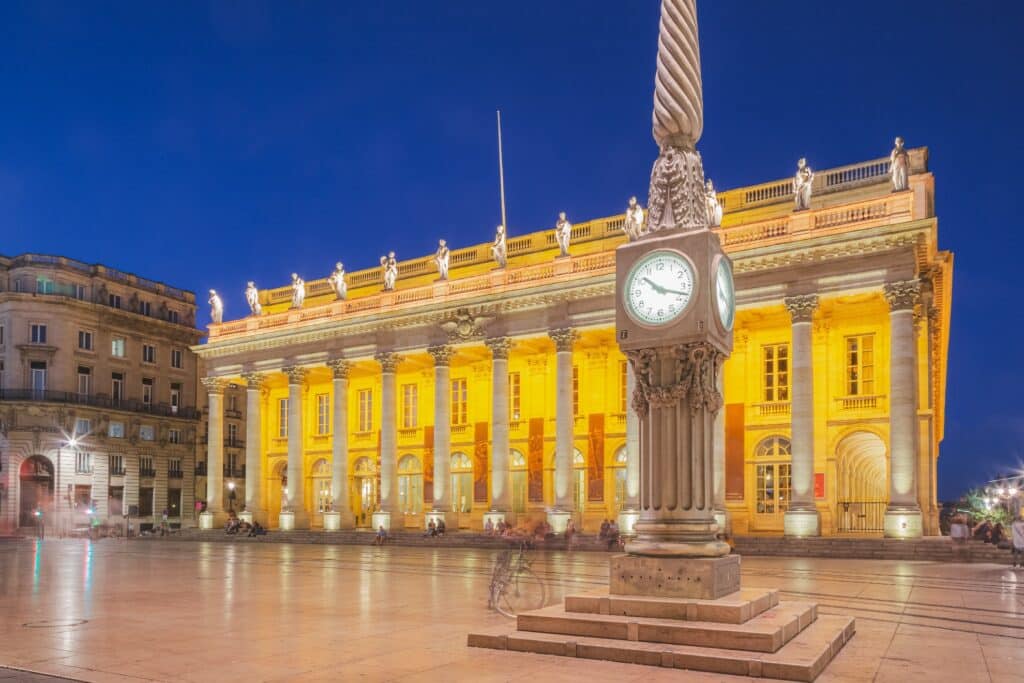
Bordeaux, France for Wine Enthusiasts
Bordeaux is one of the most famous wine regions in the world, home to prestigious châteaux, centuries-old vineyards, and an exceptional wine culture. Whether you’re a seasoned connoisseur or a casual wine lover, Bordeaux offers an unparalleled experience in wine tasting, education, and exploration. Let’s review some of the best wine-related experiences in Bordeaux.
Understanding Bordeaux Wine
Bordeaux is divided into several wine regions, each known for distinct styles and grape varieties.
- Left Bank (Médoc & Graves) – Known for Cabernet Sauvignon-dominant blends with firm tannins and aging potential.
- Right Bank (Saint-Émilion & Pomerol) – Features Merlot-driven wines that are softer and more approachable.
- Entre-Deux-Mers – Famous for crisp white wines made from Sauvignon Blanc and Sémillon.
- Sauternes & Barsac – Produces some of the world’s finest sweet wines, including Château d’Yquem.
Top Wine Experiences in Bordeaux
La Cité du Vin
This immersive wine museum is a must-visit for wine lovers. It offers interactive exhibits on global wine culture, tastings from around the world, and a panoramic wine bar with breathtaking views of Bordeaux.
Wine Bars & Tasting Rooms
- Le Bar à Vin – A stylish, affordable wine bar run by the Bordeaux Wine Council, featuring wines from all Bordeaux appellations as well as international selections.
- Aux Quatre Coins du Vin – A self-serve wine bar with an extensive selection and flexible tasting options.
- L’Intendant – A unique four-story wine shop and tasting venue offering top Bordeaux wines, including rare vintages.
Top Wine Tours & Châteaux Visits
Médoc (Left Bank)
- Château Margaux – One of Bordeaux’s most prestigious estates, offering an exclusive wine experience.
- Château Mouton Rothschild – Famous for its world-class wines and stunning art collection on wine labels.
- Château Pichon Baron – A breathtaking estate known for its structured and elegant wines.
Saint-Émilion (Right Bank)
- Château Angélus – A premier Grand Cru Classé estate with luxurious wine-tasting experiences.
- Château Cheval Blanc – An iconic name in Bordeaux winemaking, producing legendary Merlot-Cabernet Franc blends.
- Château La Gaffelière – A family-run winery offering intimate tours and tastings.
Graves & Sauternes
- Château Haut-Brion – One of Bordeaux’s oldest and most prestigious wineries.
- Château d’Yquem – Producing the world’s finest sweet wines, known for their extraordinary aging potential.
- Château Pape Clément – A historic estate with immersive wine experiences, including blending workshops.
Wine Festivals & Events
- Bordeaux Wine Festival (Bordeaux Fête le Vin) – Held every two years, this major event features tastings along the riverfront, wine workshops, and vineyard tours.
- Primeur Week (En Primeur Tastings) – A unique opportunity to sample and purchase Bordeaux wines before they are officially released.
- Medoc Marathon – A fun event where participants run through vineyards while enjoying wine tastings along the route.
Unique Wine Experiences
Blending Workshops
Become a winemaker for a day with a blending workshop at Château Pape Clément or Château de Ferrand, where you can create your own Bordeaux-style wine.
Vineyard Stays & Wine Retreats
For an immersive experience, stay at a wine château such as Les Sources de Caudalie, which combines luxury accommodations with wine therapy spa treatments.
Bordeaux is a heaven for wine enthusiasts, offering everything from historic châteaux and world-class wine tastings to hands-on blending experiences. Whether exploring the Médoc’s grand estates or sipping Merlot in Saint-Émilion, Bordeaux offers a wine adventure like no other.
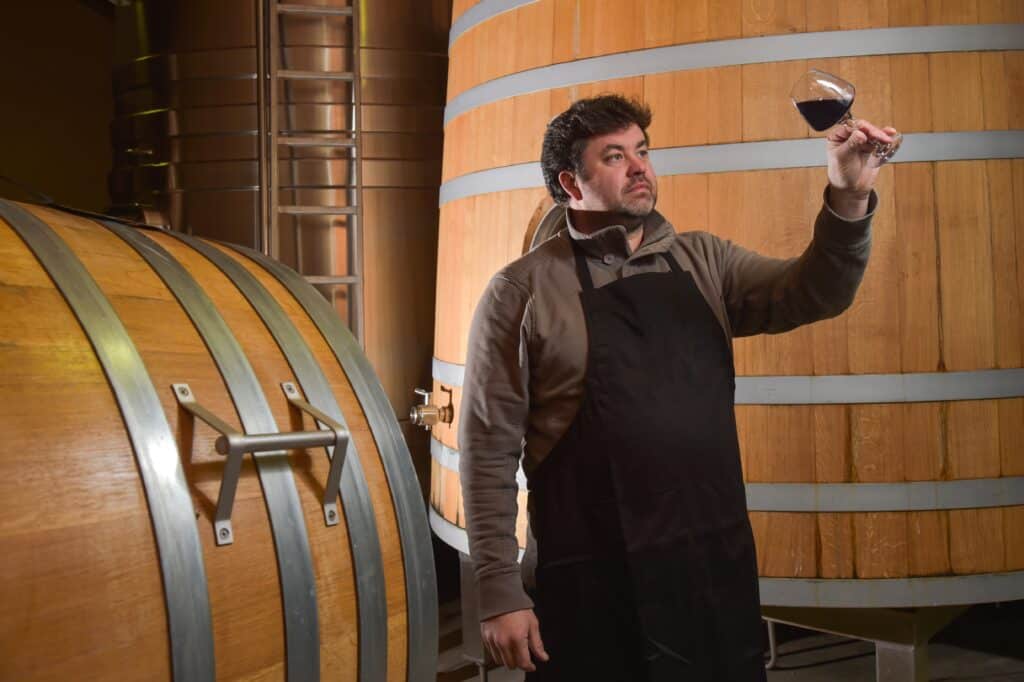
Bordeaux for Foodies
Beyond the vineyards, Bordeaux tantalizes with a culinary scene as rich and complex as its wines. From bustling markets and traditional bistros to Michelin-starred restaurants and gourmet delicacies, the city offers a paradise for food lovers. Let’s take a brief tour of some of the amazing food experiences in Bordeaux. I highlight below some must-visit spots and local specialties.
Local Specialties to Try
Canelé
A signature treat of Bordeaux, these small, caramelized pastries with a custardy center are a must-try. These pastries date back to the 18th century, when nuns from the Annonciades Convent in Bordeaux first made them. Some theories suggest that leftover egg yolks from the wine-finishing process (where egg whites were used to clarify wine) were repurposed into this sweet treat. Today, canelés are a beloved symbol of Bordeaux’s culinary heritage. The best canelés can be found at Baillardran and La Toque Cuivrée.
Entrecôte à la Bordelaise
A signature Bordeaux dish, this rib steak is cooked with a rich Bordelaise sauce, made from the region’s famous red wine, shallots, and bone marrow. Its origins are tied to Bordeaux’s deep connection with wine production and the availability of high-quality beef from nearby regions. The dish is an expression of the area’s rich flavors and wine-centric cuisine. Try it at L’Entrecote, Brasserie Bordelaise or Le Bouchon Bordelais.
Lamprey à la Bordelaise
This ancient dish, dating back to Roman times, showcases Bordeaux’s historic maritime and culinary traditions. Lamprey, a prehistoric eel-like fish, was once a delicacy of French nobility. It is slowly braised in a red wine sauce infused with spices, aromatics, and its own blood, reflecting medieval cooking methods and the city’s proximity to the Gironde estuary, where lampreys are caught. It’s a unique and historic dish best experienced at local seasonal restaurants.
Huitres d’Arcachon (Arcachon Oysters)
Fresh oysters from the nearby Arcachon Bay are considered a delicacy. Bordeaux’s connection to the nearby Arcachon Bay, one of France’s top oyster-producing regions, makes these oysters a local staple. Oyster farming in Arcachon dates back to at least the 19th century, when Napoleon III helped regulate production. These fresh, briny oysters are traditionally enjoyed with a glass of Bordeaux white wine, like Entre-Deux-Mers or Graves. Enjoy them at Chez Jean-Mi in the Marché des Capucins or Le Petit Commerce.
Foie Gras
Though foie gras is associated with all of southwest France, Bordeaux has long been part of the Gascony culinary tradition that perfected this delicacy. Dating back to ancient Egyptian and Roman times, foie gras became a regional specialty thanks to the local expertise in duck and goose farming. Served as a terrine or seared, it remains a luxurious and essential element of festive Bordeaux dining. A staple of French cuisine in general, foie gras is served in many Bordeaux restaurants. La Tupina is an excellent place to enjoy it in a traditional setting.
Best Markets for Foodies
- Marché des Capucins
Bordeaux’s largest and liveliest market, offering everything from fresh seafood and meats to cheeses, pastries, and local wines. A great spot to sample local flavors.
- Marché de Quais
Held on weekends along the Garonne River, this open-air market is perfect for tasting regional products, organic produce, and artisanal foods.
Top Restaurants & Bistros
- La Tupina
A legendary restaurant specializing in rustic southwestern French cuisine, featuring dishes cooked over an open fire.
- Le Quatrième Mur
Owned by renowned chef Philippe Etchebest, this brasserie offers high-quality French cuisine with a modern touch.
- Garopapilles
A Michelin-starred restaurant with a wine-centric approach, offering innovative tasting menus that highlight seasonal ingredients.
- Le Chapon Fin
One of Bordeaux’s oldest restaurants, known for its elegant atmosphere and refined cuisine.
- Miles
A contemporary and creative dining experience led by a multicultural team, offering a globally inspired tasting menu.
Wine and Food Pairing Experiences
Château Wine Tastings
In addition to taking a day trip to nearby Saint-Émilion, consider visiting Médoc or Pessac-Léognan for vineyard tours and wine-pairing lunches at renowned estates such as Château Pape Clément or Château Smith Haut Lafitte.
Bordeaux Restaurant Pairings
- Le Chapon Fin – One of Bordeaux’s historic restaurants, offering expertly paired Bordeaux wines with gourmet French cuisine.
- Garopapilles – A Michelin-starred restaurant with a strong focus on wine pairings.
- La Tupina – Traditional southwestern French cuisine paired with robust Bordeaux reds.
Sweet Treats & Bakeries
- Baillardran & La Toque Cuivrée
For the best canelés in the city.
- Pâtisserie San Nicolas
An excellent stop for classic French pastries.
- Masion Darricau
A must-visit chocolatier known for its handcrafted sweets.
Bordeaux is an amazing destination for foodies, offering an incredible mix of traditional and modern gastronomy. Whether you’re savoring local specialties, indulging in fine dining, or exploring the city’s vibrant markets, Bordeaux is sure to delight your taste buds at every turn.
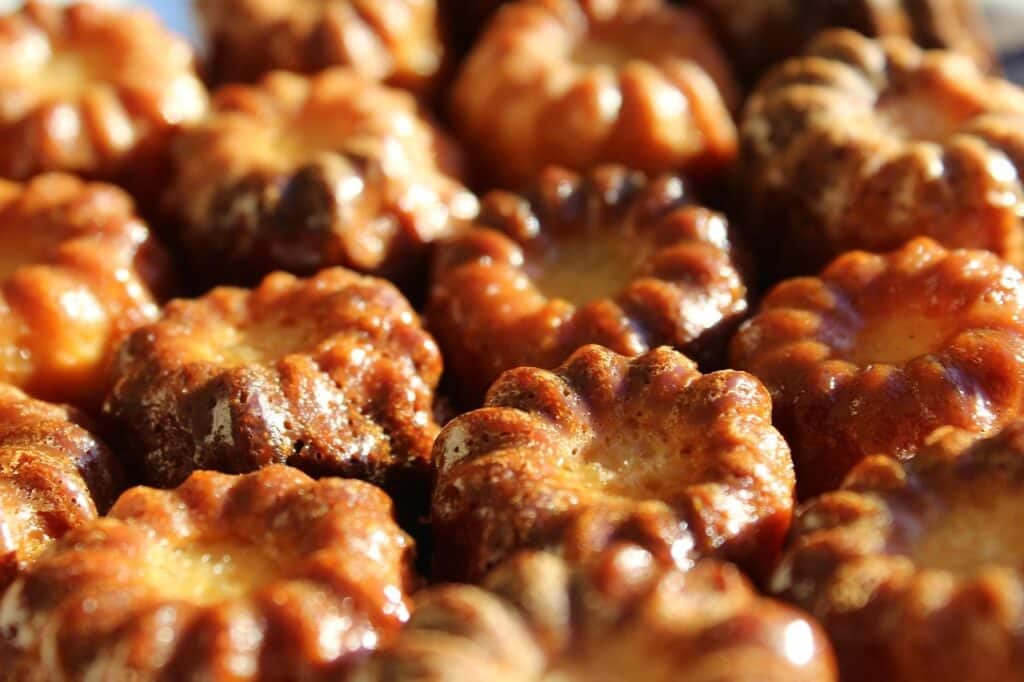
Why People Love Bordeaux
Bordeaux is a city that captivates the senses. From its cool, wonderful and welcoming people, world-class wines and outstanding cuisine to its history, art, and historic architecture, it’s a place that invites you to let your hair down to explore, indulge, and savor every moment. I hope, if nothing else, you’ve learned one thing from this Guide to an Immersive Bordeaux Experience. Whatever your interest, Bordeaux will leave you enchanted and eager to return.
So, pack your bags, raise a glass, and get ready to immerse yourself into the culture of one of France’s most unforgettable destinations.
Want to truly get to know Bordeaux but don’t want to go it alone? You can join us June 2025 on our 9-day Bordeaux Small Group Learning Escape. This tour focuses on connection, immersion and exploration, allowing you to experience the beauty of Bordeaux and the surrounding area while sharing this remarkable journey fellow travelers with shared interests.
Already Been to Bordeaux?
Check out our other Learning Escapes.
Whether you’re a seasoned traveler or setting out on your first immersive adventure, Learning Escapes offer the ideal mix of discovery, intellectual enrichment, and cultural connection. Our upcoming journeys will take you to some of the world’s most captivating destinations, where history, art, and tradition come alive.
Ready to experience travel in a deeper, more meaningful way? Join us on an upcoming Learning Escape and reconnect with the joy of authentic exploration.

